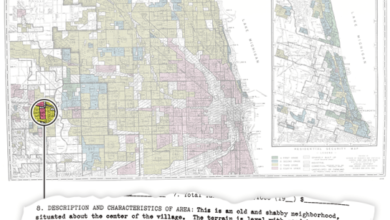News Bureau | ILLINOIS

CHAMPAIGN, Ill. – The civil rights movement was never as unified as it often has been portrayed, says University of Illinois professor Clarence Lang.
That’s because class is often a key missing element in the story, according to Lang, a professor of history and of African American studies who has written a new book on the subject.
Lawyers, educators and other middle-class professionals play the leading role in most narratives of the movement, Lang said. But contrary to those narratives, he argues that it was “fundamentally a working-class movement” and priorities, tactics and leadership, especially at the local level, were often contested along class lines.
In fact, the movement was “the mode through which class, and class relations, formed among African Americans,” he said. Sensitivities to those class dynamics can still be seen, for instance, in the way that Bill Cosby or Barack Obama speak to black audiences, often misunderstood by the mainstream news media, he said.
Lang makes his case in “Grassroots at the Gateway: Class Politics and Black Freedom Struggle in St. Louis, 1936-75” (University of Michigan Press), published last month. In it, he also tells the unique history of civil rights as played out in a border city, between North and South, where many aspects of segregation took hold early and ended early (relative to the South), but where African Americans never lost their ability to vote.
The working-class roots of the movement took hold in the 1930s, Lang said, as the wealth and status of the small black middle class waned as a result of the Great Depression. Middle-class blacks had played the key leadership role for the black community as a whole, which in St. Louis had resulted in gains such as a black high school and hospital, he said.
Their leadership, however, “was exercised in a very exclusive kind of way,” geared toward negotiating with the white community elites and fostering interracial goodwill, and often with class-centered goals in mind, Lang said.
“Middle-class blacks could shield themselves from some of the indignities of segregation more than their working-class counterparts,” Lang said. Many middle-class blacks also were wary of working-class black immigrants from the South, whom they perceived as backward and potentially capable of bringing down the perception of the larger black community, he said.
“Black newspapers would actually print instructions for how these migrants should behave.”
The Depression, however, “created in some ways a breech, a void, that allowed this working-class majority to begin to speak for themselves, as opposed to being spoken for,” Lang said. “For them to articulate the demands that they articulated, they had to fight their middle-class counterparts to do so,” he said.
For instance, the African American community as a whole sought more medical facilities, but for different reasons depending on class, Lang said. Those in the middle class, who had access to private hospitals, were focused on expanding opportunities for training black health-care professionals. Those in the working class were more preoccupied with full-service indigent care.
Conditions in working-class neighborhoods also dictated a higher priority on improving basic services such as garbage pickup, streetlights and sewers, and they also sought more and better working-class jobs, he said. And instead of deal-making, they more often made demands through street protests and other forms of mass action.
“It reshaped the class dynamics in the black community, and in doing so it turned on its head the accepted ways of race relations in the city,” Lang said.
Those dynamics continued in succeeding decades, through the major civil rights gains of the 1950s and 1960s, Lang said. Class-related conflicts over goals, tactics and leadership were fought out in St. Louis chapters of organizations such as the Congress of Racial Equality (CORE), the NAACP and to some extent the Urban League, he said.
In one illustration of the working-class agenda during those years, Lang opens his book with the story of how CORE picketed the Gateway Arch construction site in the summer of 1964, protesting the exclusion of African Americans from the skilled building trades involved in the project. As part of the protest, two activists scaled one of the partially built legs of the arch, effectively shutting down the site for several hours.
In the 1970s, the class dynamics shifted again, Lang said, with new middle-class opportunities for blacks in business and government. “The dominant segment articulating a black agenda increasingly becomes this post-civil-rights black middle class,” he said.
At the same time, with industrial flight and other developments, many of the jobs that black working-class activists have fought for are in decline, Lang said. “At the point where people are poised to take advantage of the gains they’d struggled for, the bottom falls out,” he said. Talk of a black working class gets replaced increasingly with talk of an “underclass,” he said.
“So in some ways, you come full circle, back to where you have this narrative of a black middle class who through their stewardship and their genius and their mentorship and their example, will show the way for the rest to follow,” Lang said.
In the current severe recession, in which middle-class blacks have been disproportionately affected, Lang said he wonders if there is potential for another full circle back to the 1930s and a return to working-class priorities.
























































